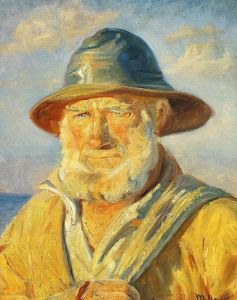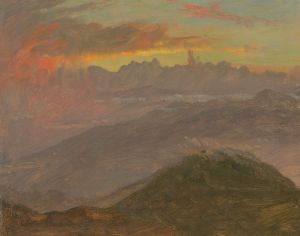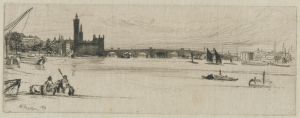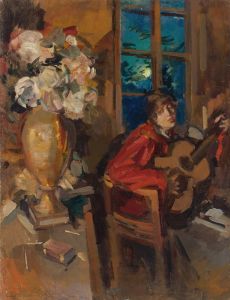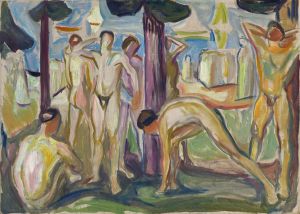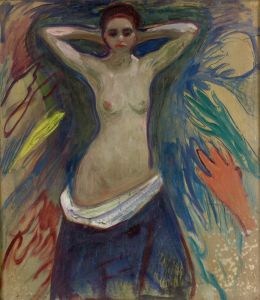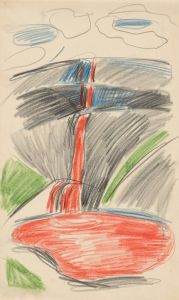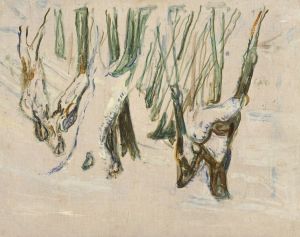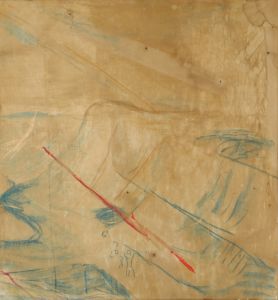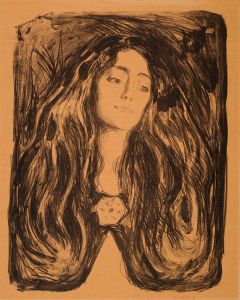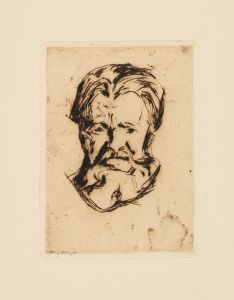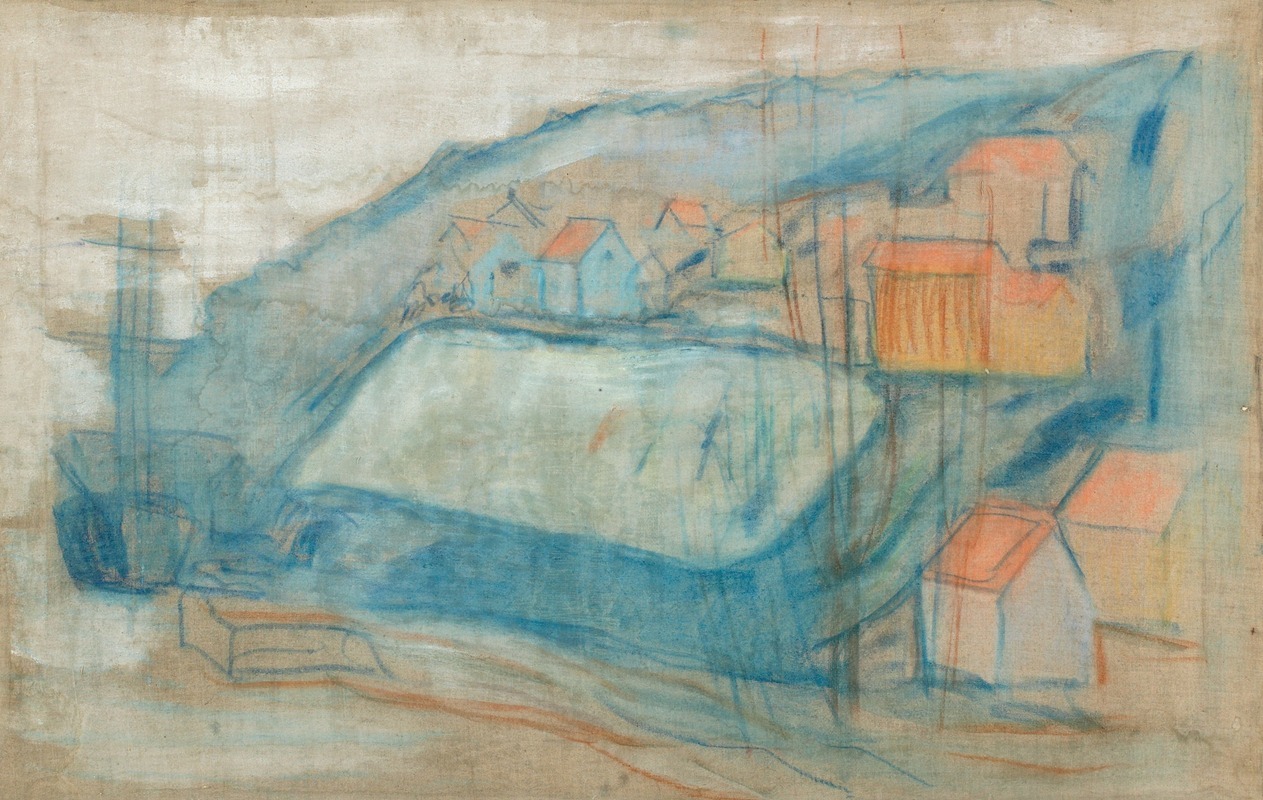
Village by the Sea
A hand-painted replica of Edvard Munch’s masterpiece Village by the Sea, meticulously crafted by professional artists to capture the true essence of the original. Each piece is created with museum-quality canvas and rare mineral pigments, carefully painted by experienced artists with delicate brushstrokes and rich, layered colors to perfectly recreate the texture of the original artwork. Unlike machine-printed reproductions, this hand-painted version brings the painting to life, infused with the artist’s emotions and skill in every stroke. Whether for personal collection or home decoration, it instantly elevates the artistic atmosphere of any space.
"Village by the Sea" is a painting by the renowned Norwegian artist Edvard Munch. Munch, born on December 12, 1863, in Loten, Norway, is best known for his evocative and emotional works that often explore themes of existential angst, love, and death. His most famous work, "The Scream," has become an iconic representation of modern existentialism.
"Village by the Sea" was created in 1909, a period that marked a significant transition in Munch's life and artistic career. This painting is part of Munch's later works, which are characterized by a more vibrant use of color and a shift towards a more optimistic outlook compared to his earlier, darker themes.
The painting depicts a serene coastal village scene, capturing the tranquility and simplicity of rural life by the sea. Munch's use of color in this piece is particularly notable, with bright, bold hues that convey a sense of warmth and calm. The composition features a cluster of houses nestled along the shoreline, with the sea stretching out into the distance. The sky is painted in soft, pastel tones, suggesting either dawn or dusk, adding to the peaceful atmosphere of the scene.
Munch's technique in "Village by the Sea" reflects his mastery of capturing mood and emotion through color and composition. The brushstrokes are loose and expressive, giving the painting a sense of movement and life. This approach is typical of Munch's style, which often emphasizes the emotional and psychological over the purely representational.
The painting is also significant in the context of Munch's personal life. In 1908, Munch suffered a nervous breakdown and subsequently spent time in a sanatorium. After his recovery, his work began to reflect a more positive and hopeful outlook, as seen in "Village by the Sea." This painting can be viewed as a reflection of Munch's renewed sense of peace and stability following his period of mental turmoil.
"Village by the Sea" is housed in the Munch Museum in Oslo, Norway, which holds the largest collection of Munch's works. The museum was established in 1963, on the centenary of Munch's birth, and serves as a testament to his enduring legacy in the world of art.
Edvard Munch's influence on modern art cannot be overstated. His innovative use of color, form, and psychological depth paved the way for future movements such as Expressionism and Symbolism. "Village by the Sea" stands as a testament to his ability to capture the essence of human experience, from the depths of despair to the tranquility of a peaceful village by the sea.
In summary, "Village by the Sea" is a significant work in Edvard Munch's oeuvre, reflecting both his personal journey and his artistic evolution. The painting's serene depiction of a coastal village, combined with Munch's expressive use of color and form, makes it a notable example of his later, more optimistic period.





